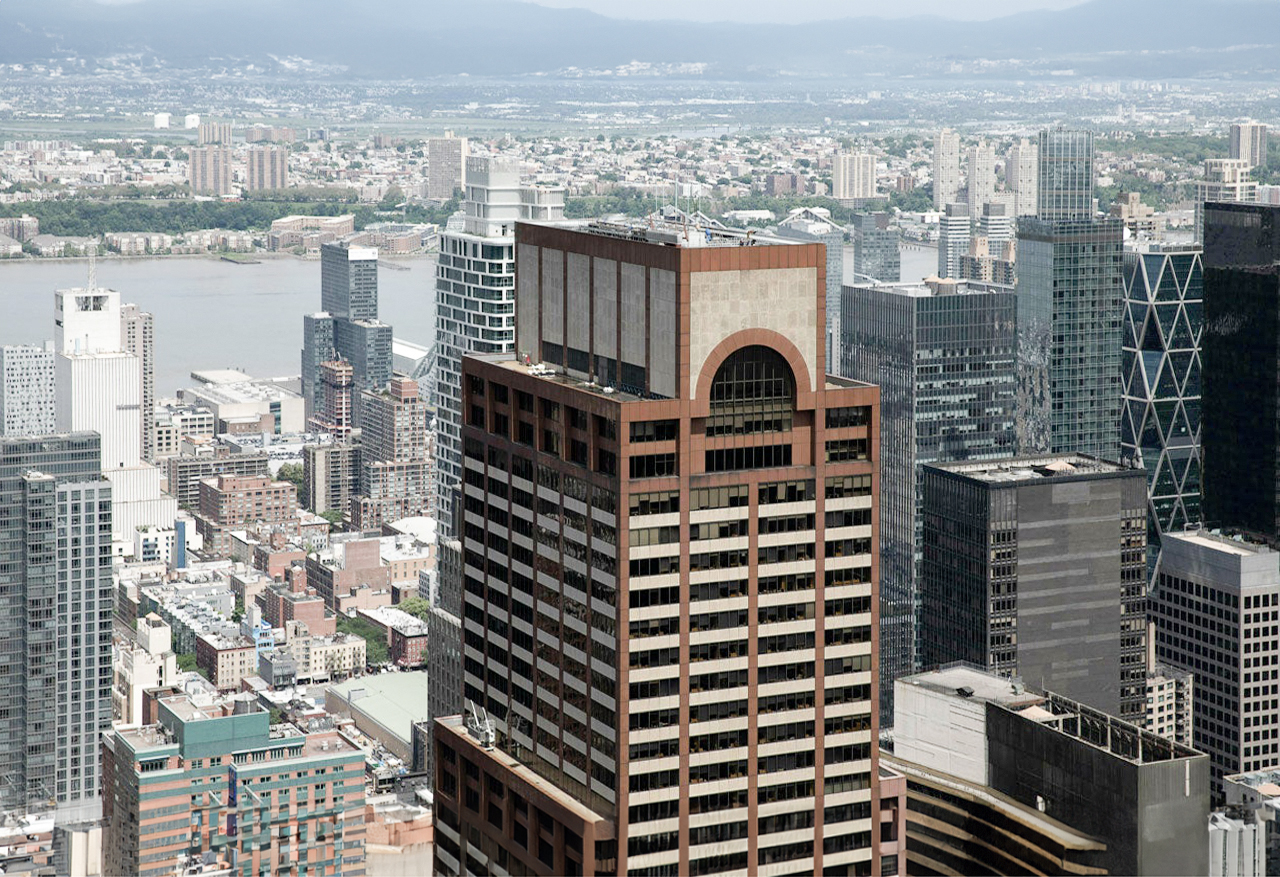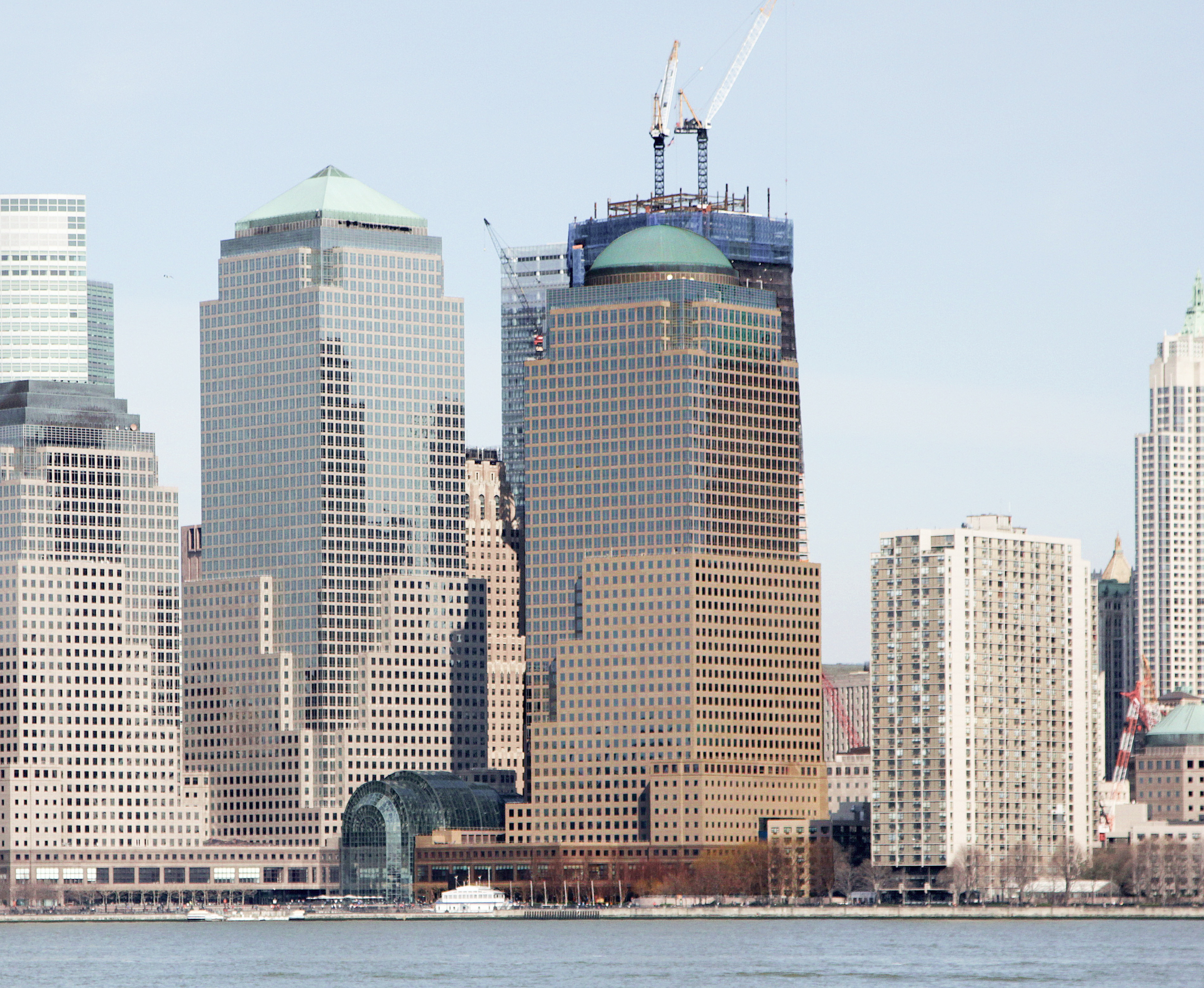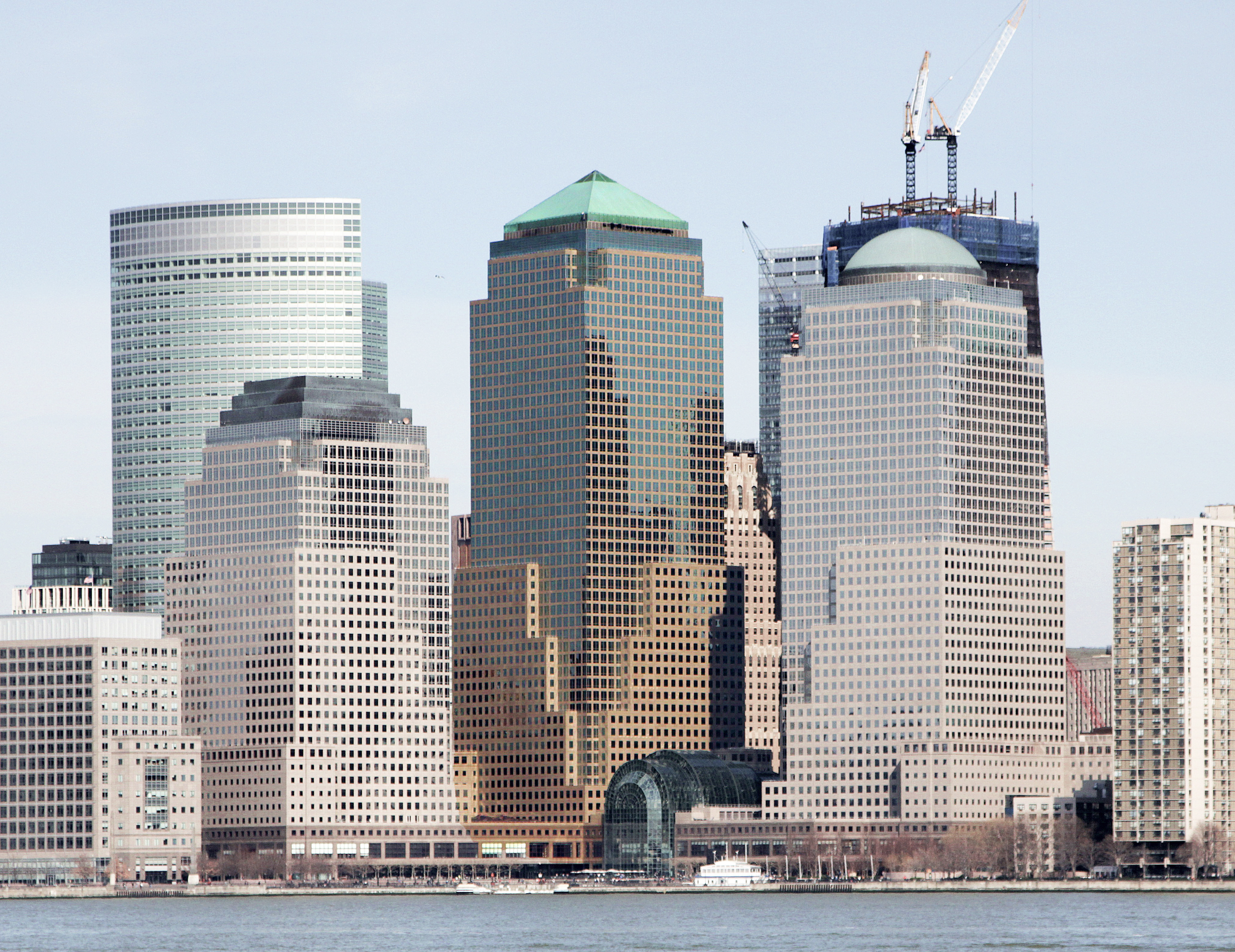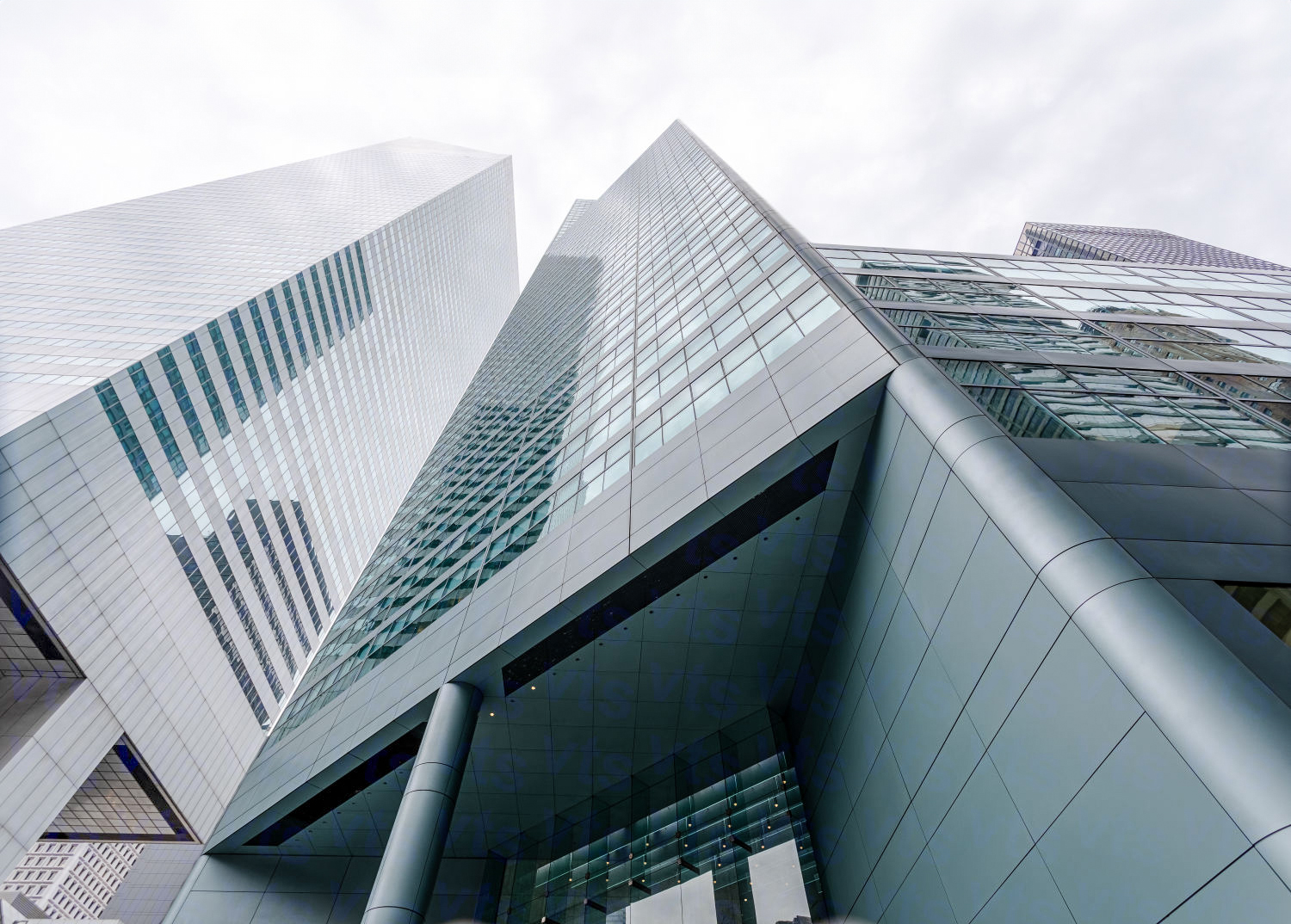The Axa Equitable Center is a Postmodernist skyscraper designed by Edward Larrabee Barnes, and built in 1986 in New York, NY.
Axa Equitable Center is not the only name you might know this building by though. It is common for companies to want to attach their names to iconic buildings when they move in, or for the general public to come up with nicknames, and this one is no exception. The Axa Equitable Center is also known, or has been known as, Equitable Center, AXA Center, AXA Equitable Tower, or 787 Seventh Avenue.
Its precise street address is 787 Seventh Avenue, New York, NY. You can also find it on the map here.
The main tower is linked to an 8-story smaller tower on its east side by a two-story bridge structure at the 7th and 8th floors, creating an arcade over 6½ Avenue. It is one of six passageways that form 6½ Avenue.
Entering from Seventh Avenue, one enters a five-story cubic atrium with a semicircular marble seating and a circular marble fountain surrounded by trees.







